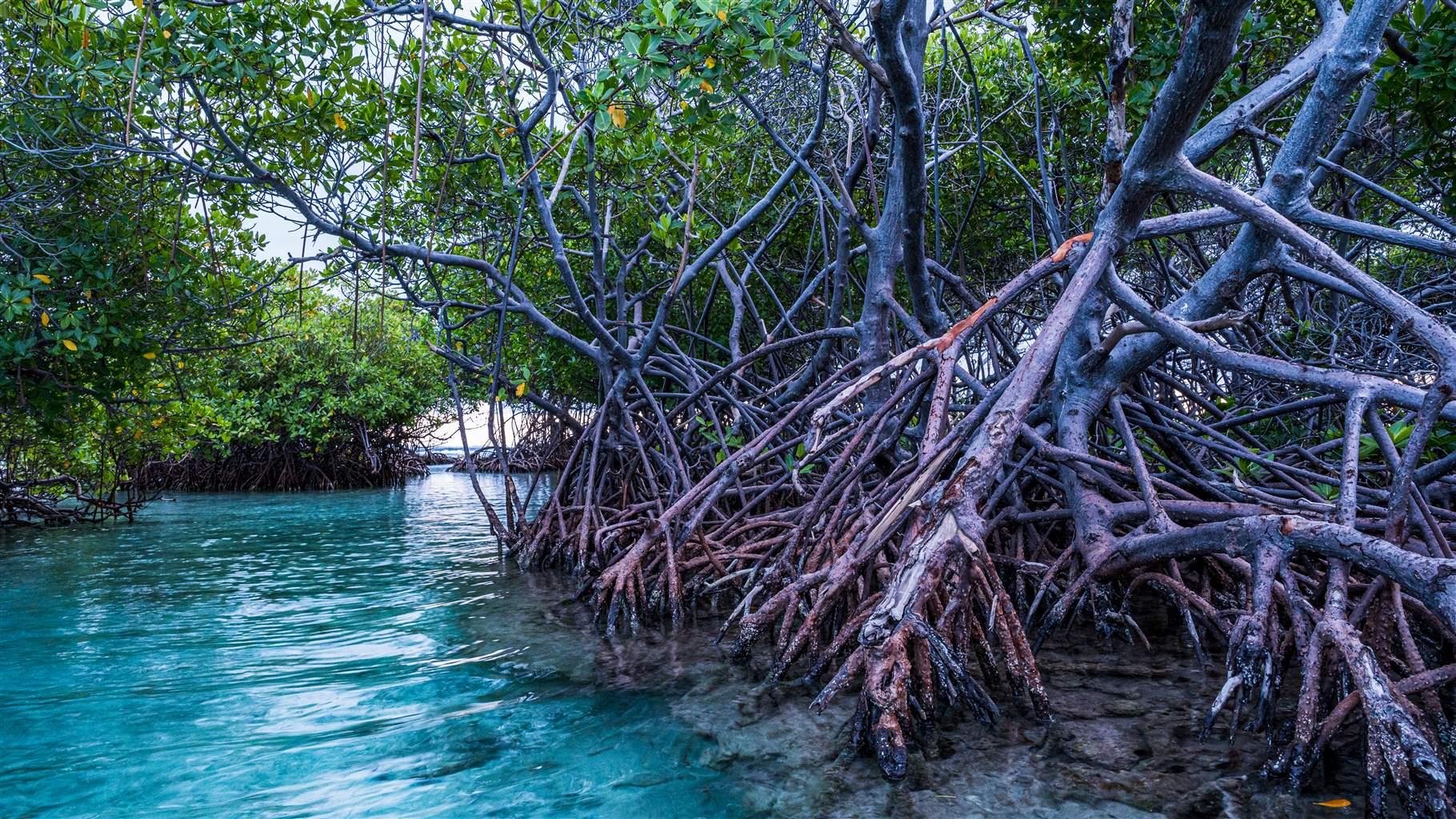In Puerto Rico, Flooding and Loss of Coastal Habitat Are Top Conservation Concerns
Survey results will inform environmental department’s plans for island’s extensive—and economically valuable—natural assets

Puerto Rico’s residents say flooding, erosion, and loss of wetlands and other coastal habitats are among the most important threats the island’s government should prioritize in coastal resource planning, according to a survey by the island’s Department of Natural and Environmental Resources (DNER).
About 125 people, including academics, local and federal government officials, nonprofit organization representatives, business owners, and fishers answered the survey between November and January to help determine which topics people most want the agency to address. DNER began updating its management strategy for 2023-2025 as part of the island’s participation in the federal Coastal Zone Enhancement Program, which encourages states and territories to identify needs and opportunities for their natural coastal areas.
If the National Oceanic and Atmospheric Administration (NOAA) approves Puerto Rico’s strategy, the island would be eligible for federal grant money to fund some of its work.
DNER’s survey revealed that most respondents agreed on three top priorities:
- Wetlands. Respondents identified threats, including pollution, coastal development, filling or excavating wetlands for coastal structures, and altering water flow patterns.
- Coastal hazards. Respondents expressed concern about shoreline erosion, storms, and floods.
- Cumulative and secondary impacts. Respondents worried about loss of natural features that protect against erosion and floods, such as beaches, dunes, wetlands, and barrier islands. They also were concerned about loss, fragmentation, or degradation of habitats, such as corals and wetlands. Respondents often blamed residential and commercial development for these losses.
The survey results, along with interviews of agency staff, experts, and stakeholders, will inform development of an assessment to identify priorities and how to address them. DNER will then develop a strategy for strengthening policies, management plans, and ideas for new research to guide its coastal work from 2023-2025. The public will have a chance to comment on the assessment and draft strategy before DNER submits the documents to NOAA for approval later this year.
Puerto Rico’s last strategy plan in 2016 also focused on wetlands and coastal hazards. As a result, DNER used NOAA funding to update its inventory of wetlands and created a wetlands advisory group. The agency also created plans to address climate change and supported a law to offset greenhouse gas emissions. Continuing to focus on wetlands and coastal hazards, plus some other topics identified as priorities in the survey, should help keep the island on track toward coastal improvements that matter most to residents.
The federal coastal zone enhancement program is one of the focal areas of the National Coastal Zone Management Program, which Congress established in 1972. States and territories can join the voluntary national initiative by developing coastal management programs. NOAA has awarded more than $2 billion in grants under the program, which Puerto Rico joined in 1978.
In recent years, Puerto Rico received NOAA funding to help establish partnerships with local nongovernmental organizations to manage the Tres Palmas Marine Reserve, one of the main coral hot spots on the island’s west coast, and the Guánica State Forest, one of the most extensive tropical dry forests in the world, and to assess damage from hurricanes Irma and María and address impacts from pollution and climate change.
Puerto Rico’s coasts, home to roughly two thirds of its population, are an economic force, drawing tourists from around the world and supporting nearly 700,000 jobs that generate about $20 billion in earnings annually. The coasts are central to people’s way of life, and a comprehensive plan will help protect the island’s culture, environment, and economy.
Holly Binns is a project director and Yasmin Vélez-Sánchez is a manager with The Pew Charitable Trusts’ conserving marine life in the United States project.







